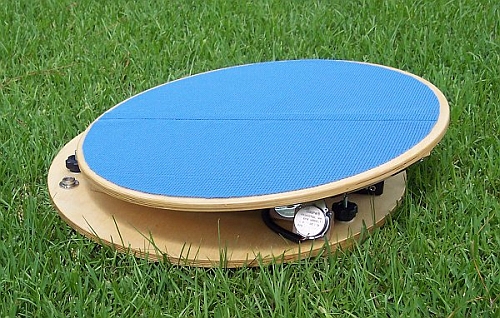

Round Table Platform

In June of 2005, I ordered an equatorial platform from Brian Reed, of Round Table Platforms. The combination of apparent quality, clean design, low price and quick delivery caught my attention, and I've not been disappointed.
Made from Baltic Birch, Brian's platforms are probably the best value available today in regard to equatorial platforms. I've been pleased with the performance of the platform, both with my 8" Hardin Dob as well as my 14.5" TeleKit. The blue mat you see in the photo above is my addition - Just an extra bit of resistance to slipping, since I opted not to turn the platform into the ground board of my scope. I want to be able to change scopes, so my entire scope (ground board and all) simply sits on top of the platform. As you can see in the photo below, the height at zenith is just about perfect for me.
And, yes, the photo below was taken in my kitchen... when it's raining outside and you wanna test something, a man's gotta do what a man's gotta do (and no, I'm not really looking at the ceiling...)!
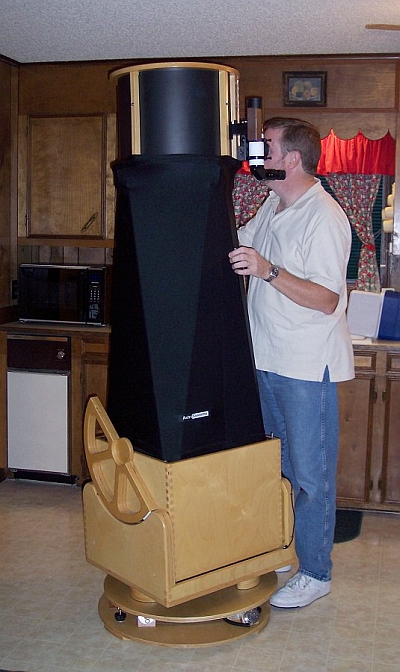
I'll be the first to sing the praises of Brian's hardware as well as his customer support. I've had a number of questions, all of which he has patiently answered. Right now, I'm in the process of retro-fitting a "reset support" mechanism and Brian has been a great help. With a relatively heavy scope such as my TeleKit, it's certainly possible to use the regular "lift and move" method of resetting. However, to avoid potential (individually minor, but cumulatively substantial) damage to the platform over the long term, I'm working on a reset support to controllably lift the scope weight completely off the drive wheel during resets. Brian has a system on current platforms, but I ran into unforeseen difficulties while trying to retrofit it to my platform. As a result, I've taken a different approach (first photo below). Although admittedly a bit "prototypical" in appearance, it seems to be functional enough. I may end up making a new one that has a more finished (not to mention planned-out) appearance once I get a feel for how well this one works. Just insert the lift lever in the fulcrum with the bearing under the north sector runner and push down. The scope comes up easily, allowing for a smooth and unobstructed reset. Testing has been OK, but there's nothing like field experience to tell the tale. At the very least, the current version is a bit lacking in precision and finish. That's why there are two black guidlines on the base of the platform (a reference to help keep the lever properly aligned so the bearing doesn't roll off the runner).
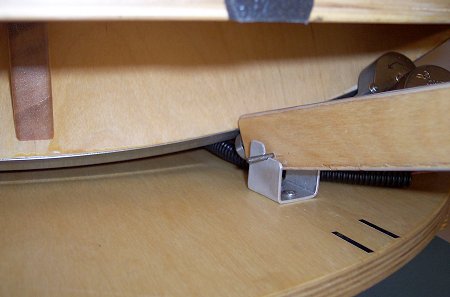
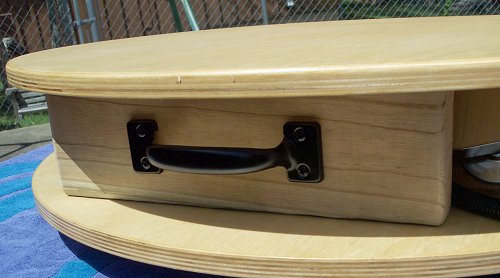
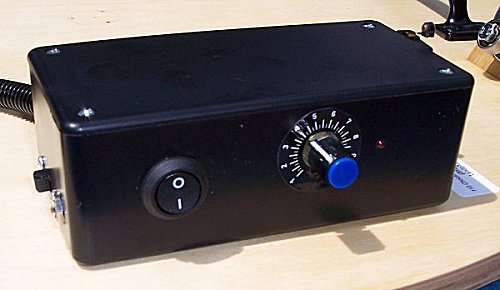
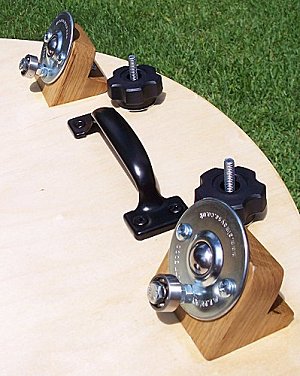
I've also added a few things to customize the platform (extra handle, fancy-schmancy knobs, bubble level, compass, an 8 D-cell holder, etc.). The photos above show a few of the modifications I've made. The 2x4 support block was needed when the platform utilized a urethane-coated drive wheel. It was used to prevent a flat spot on the wheel resulting from the weight of the scope and/or platform resting in one place for an extended period of time. Now that I have an aluminum drive wheel, it may not strictly be necessary, but I'll still use it. It also helps prevent unecessary wear on the wheel and northwest runner face, since proper friction between those two components is critical to drive accuracy.
You can also see the scale I made for the RA speed adjustment knob. While the numbers don't represent any real-world units, they do provide a very handy reference point when making adjustments. I also added a carry handle between the two south bearings.
One thing you can't see (since I added after these photos were taken) is a handheld "kill switch" on a coiled cord. Before, I had to get off my observing chair, kneel down, turn off the power and get back to the eyepiece (on the chair, usually) in order to establish the field orientation by drift... sometimes in heavy clothing and the cold. Now, I just grab the switch before I sit down at the eyepiece and when I want to let it drift, I hold down the button. Release it, and it's tracking again.
All in all, it's a refreshing change from the "look / push" cycle of typical Dobsonian ops to have the object in question simply remain in the eyepiece for as long as you need. No more rushing to get back to the eyepiece from a quick squint at a chart, before it's gone again. Even a rough "alignment" in the general direction of north will work pretty well. With a careful drift alignment, the scope can run unattended for an extended period without losing that faint fuzzy.